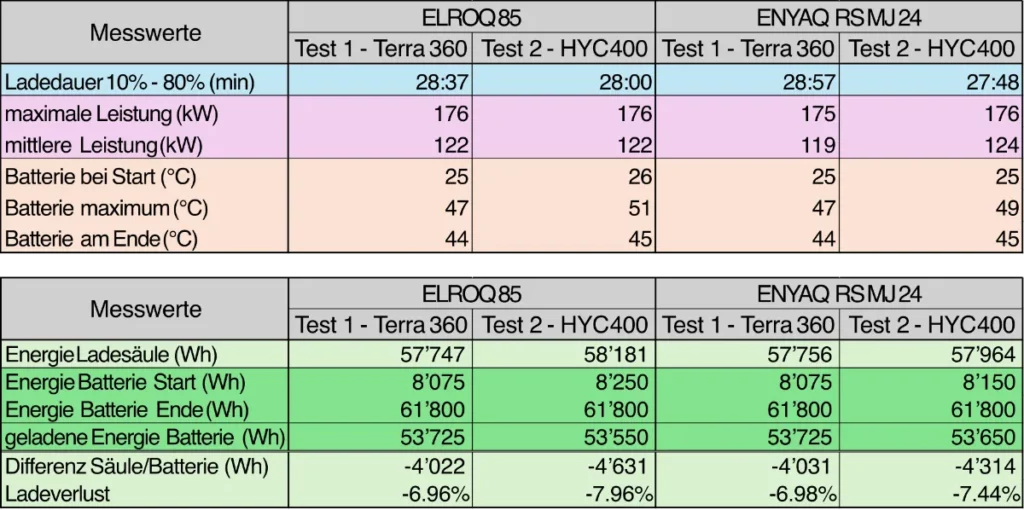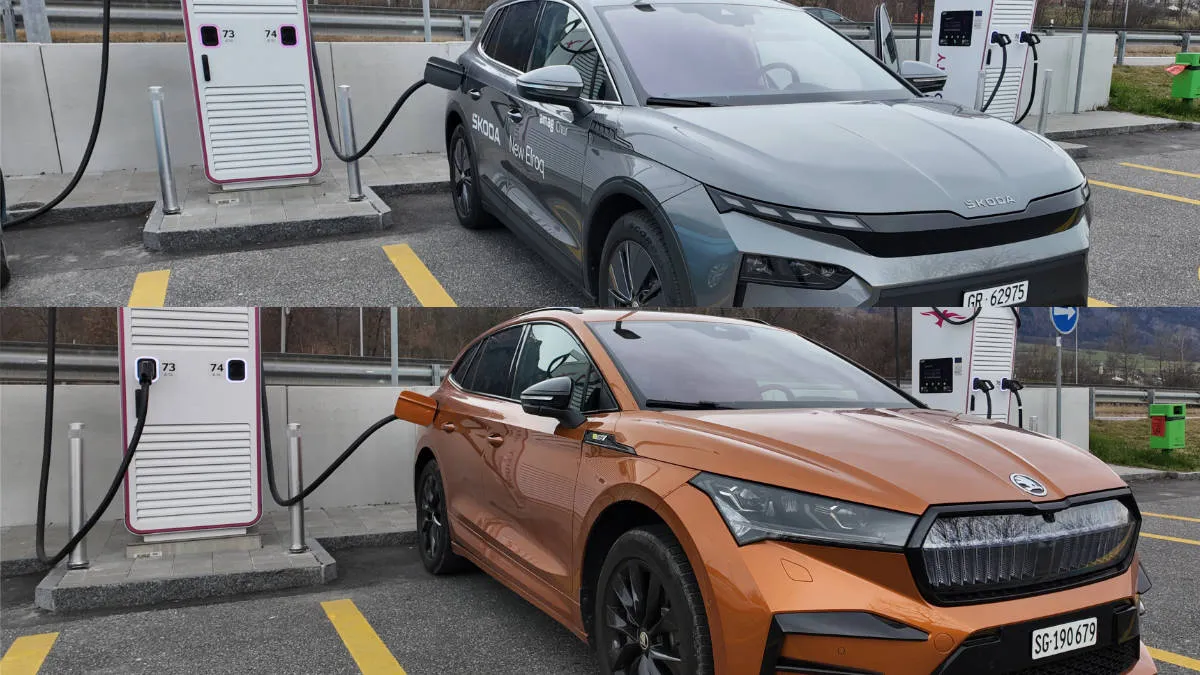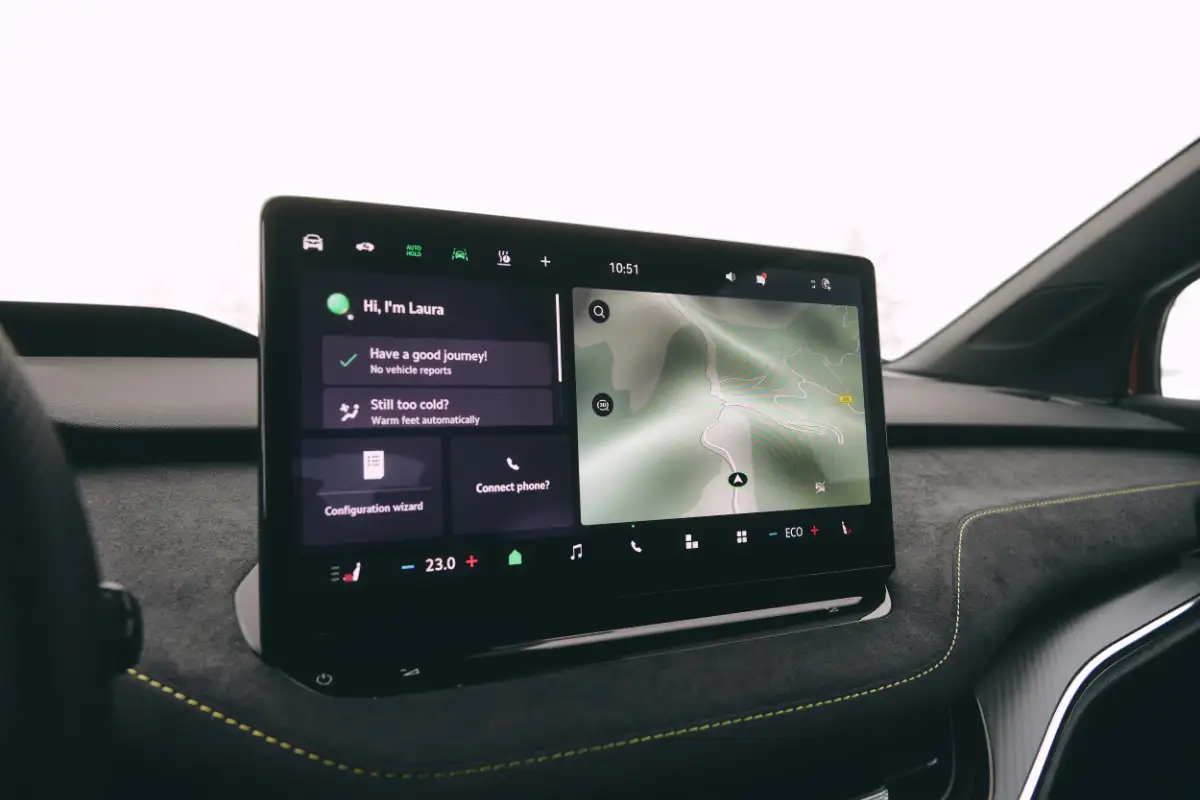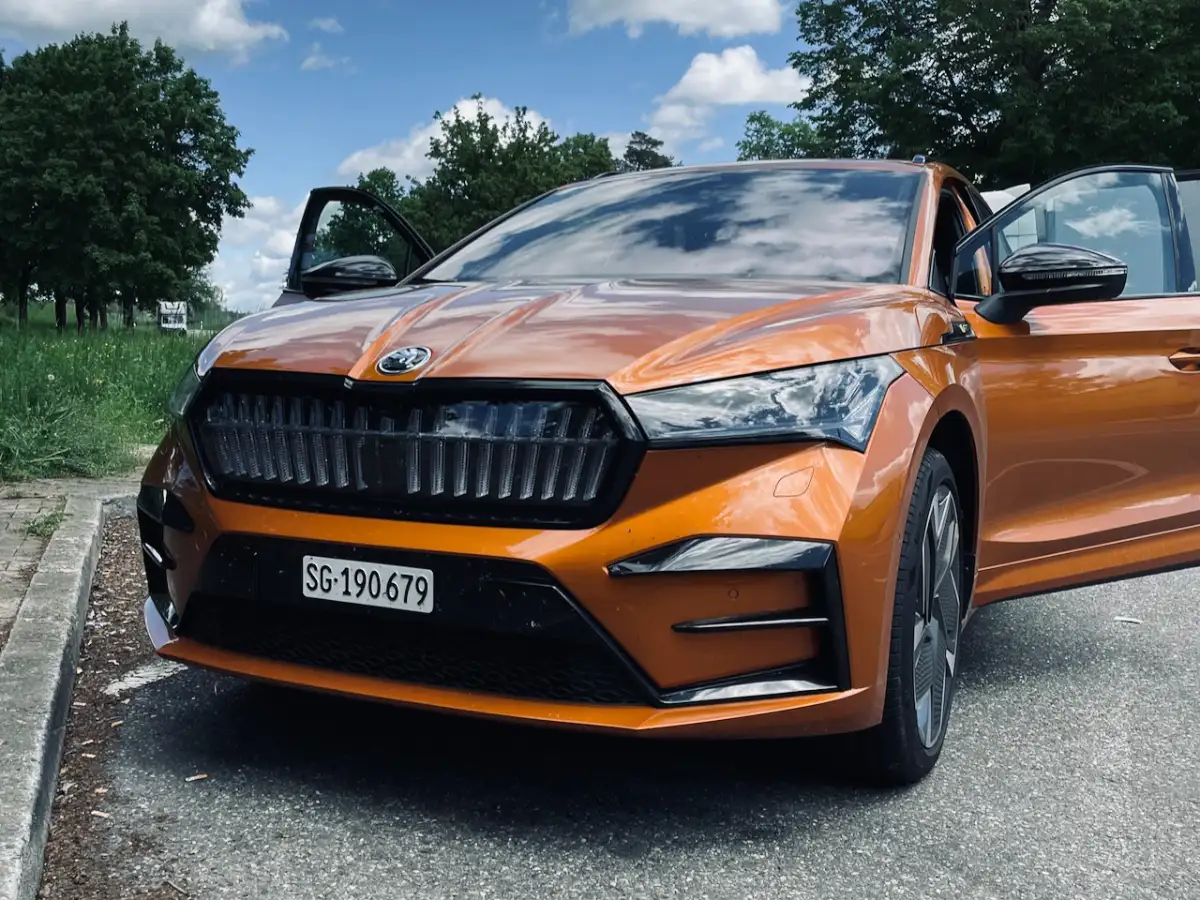Charging time is a key factor for many EV buyers. Škoda claims that the ELROQ 85, equipped with a 77 kWh battery, can charge from 10 to 80 percent in just 28 minutes. But does that hold true in real-world conditions?
To find out, I put the ELROQ 85 through a detailed charging test. And as so often, the reality turned out to be more complex than the spec sheet suggests.
The ELROQ 85 in Its First Charging Test
During the initial test at an ABB Terra 360 charger, the vehicle performed very close to Škoda’s official figures:
- Peak charging power of 175 kW was achieved
- Charging time from 10 to 80 percent: 28 minutes and 37 seconds
- Average charging power: approximately 122 kW
However, one surprise stood out: the charging curve showed an unexpected power drop at 40 percent SoC – something not typical for MEB-platform vehicles.
So a second test was necessary.
Comparison with the Enyaq RS – Is It the Car or the Charger?
Since the ELROQ 85 and the 2024 Enyaq RS use the same battery pack, I repeated the exact test with my own Enyaq – at the same ABB Terra 360 charger.
The result? The same drop at 40 percent SoC. This strongly suggested that the issue wasn’t with the vehicles, but with the charger.
Still, the overall charging session was acceptable:
Around 29 minutes total, with an average charging power of 119 kW.
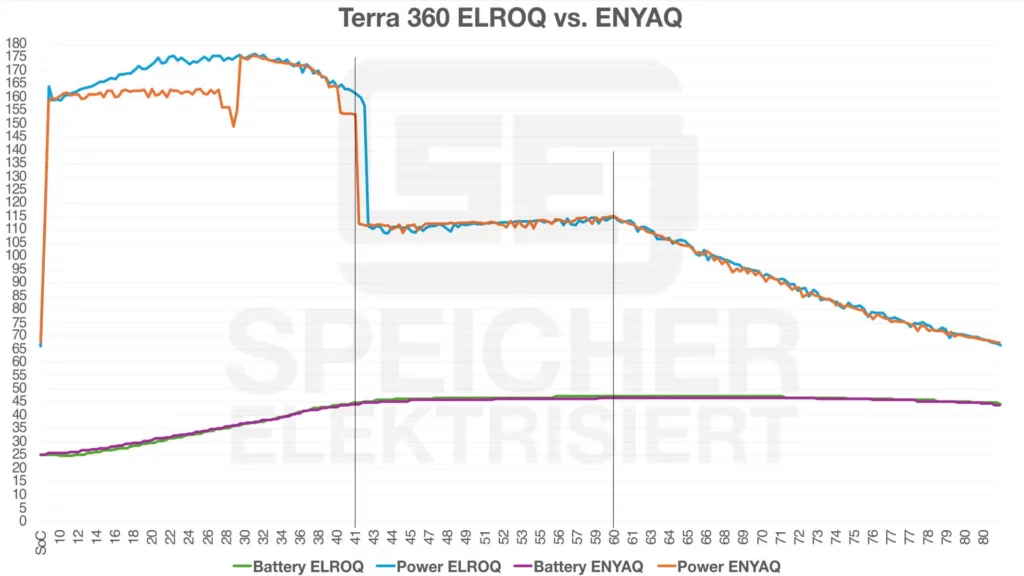
Retesting at an Alpitronic Hypercharger
To be sure, I tested both the ELROQ 85 and the Enyaq RS again – this time at an Alpitronic Hypercharger HYC400.
- ELROQ 85: Perfect charging curve. Immediately reached 175 kW, held steady up to about 45 percent SoC, then a gradual tapering.
- Enyaq RS: Also a stable curve, though with a slight, unexpected dip at 37 percent SoC.
- Charging times: Both vehicles finished in about 28 minutes. The Enyaq RS was slightly faster at 27:37.
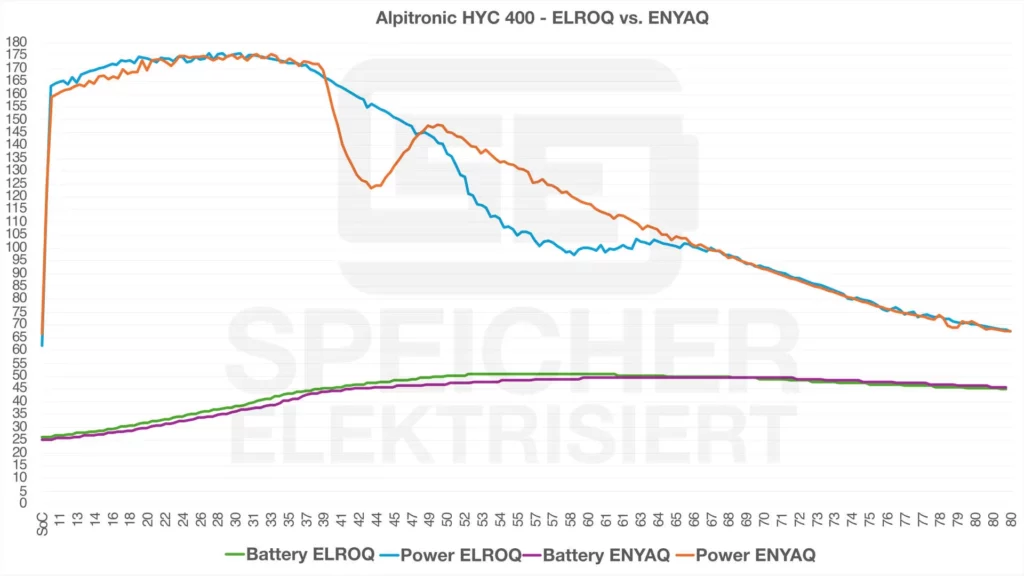
What Happens Inside the Battery?
A look at the data revealed the following:
Overall, the ELROQ 85 charges nearly identically to the Enyaq RS, with only small variations in the charging curve.
Peak battery temperature reached 50 to 51 °C, at which point the battery management system began to reduce charging power slightly.
Charging losses were between 7 and 7.5 percent – well within the expected range.
